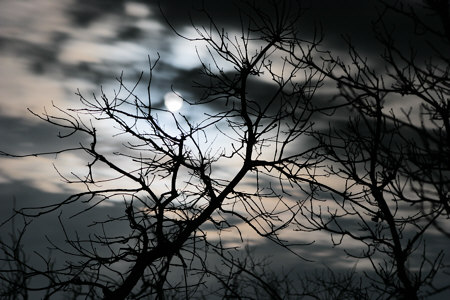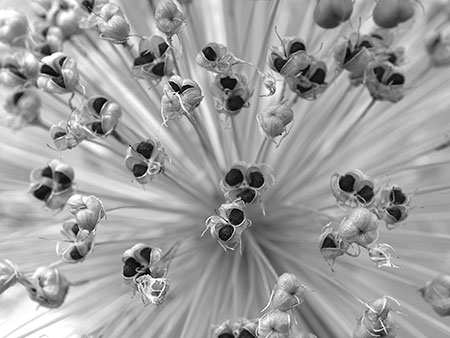In my last post, I gave a definition for art as the “quality of communication.” That was the shortest conceivable statement.
The long version of the definition, without using the words “communication” or “quality” would be,”That which is imparted or transmitted by any means and is perceived to have a supreme or very great degree of excellence.”
By classing art within the broader confines of communication we have tools we can use to make the study of art quite a bit less arbitrary and a quite a bit more useful to explain, predict, and enhance. So that is a useful definition.

I’ve included here one of the inimitable Michelo Angelo’s most famous pieces. It is an interesting mix of idealism and realism. The contrast between the religious and erotic imperatives informed much of the great man’s work. The overly large head and hands of this David have always intrigued me. It was as though dear Michelo was saying, “The secret of David is his mind and his craft, not his beauty, for beauty fades, but these endure.”
There is really no faulting the technique here. At this level, any nitpicking sounds like the Fox in the old fable who when he could get the grapes he wanted, complained they “sour.”
This piece exemplifies the perfect marriage of technique and message.
But this union is not always obvious.
Someone could say, “Well God made the universe, so when I look at the sky, I am looking at His art.”
Certainly, the sky can be aesthetic. That’s why using the word “aesthetic” in a definition of art is so problematic. The definitions are circular.
Maybe God did make the universe. If so, the above statement could be true. If God did not make the universe, then we might have a hard time considering the sky art since it violates the notion of a conscious creation and hence our sense that communication requires an originator and at least some vague intention. But if we are to define art in a way that encompasses every view of the universe, then we cannot rightfully exclude such beliefs simply because we do not happen to believe there was a conscious cause and therefore not a true communication.
We can narrow our definition of communication to exclude such things; we can broaden it to include the will of God or gods; we can narrow it to exclude non conscious transmissions, or we can broaden it to include non conscious transmissions; regardless, we have a means of understanding why one person will experience something as art and another will not.
Intention need not be a complexly pre-conceived “message.”
“I will now make a picture of a cat,” or “Hmmm… I like the shape of that water line. I think I shall take a picture of that,” is intention enough, it seems, to satisfy the requirement of a creative impulse from a creator for communication to occur. Because communication can be complex does not mean that it must be complex. Often the very best art is based on simplicities so profound they cannot be easily be expressed in words and indeed were not conceived that way by the artist.
If art, while having its own ideals, is classed within the broader category of communication, it follows that art will obey the rules of communication. The success or failure of any work of art can be understood the same way communications succeed or fail.
That summarizes the key points of my previous post. Purposely, I ignored the vast subject of craft or skill to keep the scope sufficiently narrow, but I did say, that understanding that art was a subset of communication can be used to explode the relationship between art and technique.
Here, I make good on that promise.
Our entry point into that explosion is found in the word “quality.”
But I must do a little backtracking and undercutting. Forgive me if the following paragraph is too pedantic, but I cannot assume everyone knows this.
How supreme the “supreme” in quality is, is naturally a matter of opinion, but when we crack the dictionary and look up the word “art,” we see the root meanings in all the Western tongues go back to “craft” or “skill.” In Greek, we have the root, techne, from which we get “technical” and “technique.” Techne and the Latin ars were regarded by ancient peoples to be so nearly synonymous that they were considered merely different sounds for the same thing. In Sanskrit, an Indo-European language also, the word ars is even more fundamental — to make, to fashion, to form. That may be the most ancient surviving meaning. Linguists differ on this. It is possible the Sanskrit word evolved while the Latin remained true to the original Indo-European sense, but common to all the original meanings is an implicit expectation that craft, in order to be considered worthy, must be excellent in implementation.
In the arts you will find people who disagree with this. It might be two tenths of a percent; it might be as high as five percent, but most of the human race will expect that anything which is to be regarded as excellent art must have excellence of execution.
It was that pesky 0.2 to 5.0 percent that defied explanation.
I have dreaded bringing Picasso up.

In about something less than one in twenty households in the US that actually hang art on their walls, you are likely to find a Picasso print or two. He and his consequences need to be explained. In other forums, whenever anyone points out that Picasso was really not very skilled, there seem to be several minions of the mediocre who have to rush in and carefully “explain” how that is not so.
The industrious champions of skillessness will provide links to the same old crappy work Picasso did when he was a young teenager. These are supposed to show just how talented he really was, but in fact only show that when he was fourteen he could paint like the average sixteen year old art student of the era.
We will see the same old beginner errors. We’ll see that same, ugly heavy handedness he never overcame his entire life. Picasso never did learn how light will diffract on the edges of objects and so he always tended to juxtapose his lightest lights and darkest darks in a naíve effort to separate objects from the background to the foreground. He never did overcome his inability to draw conic sections. He never really got perspective. Always his paint is over blended or under-blended.
It’s all so obvious to anyone who really can draw and paint. So obvious, that to us, protestations to the contrary are used as shibboleths.
[Short definition: A shibboleth is code used to test whether someone is really a part of a group or not. For example, anyone who says, “You know, time is the fourth dimension,” reveals that he or she is not a scientist and indeed, really does not know much about math.]
So “Picasso was an extremely skillful painter” is a shibboleth that indicates the person does not really know how to draw or paint.
But still, regarding Picasso, there will be those same old versions of quotes from writers who did not know how to paint or draw like Gore Vidal, Henry Miller, and Gertrude Stein about what a gre e e eat draftsman he was.
All that misses the whole point.
It’s not that Picasso wasn’t a great artist. He was.
He was a great artist because he could achieve powerful communications. He was not a great artist because of his technique. He was a great artist despite his crude, even disgusting, lack of skill.
Picasso accumulated a fan club of hyperbole wielding people who, like him, wanted “not to create art, but destroy it.”
Art in Picasso’s era was in need of some destroying. It had become too rule bound and pretentious. Only the very wealthiest people could afford it. (Picasso himself found his prices ironic and tried to do cheaply priced things, but collectors drove those prices up too.) The catastrophes of life and betrayals of ideals in Europe during WWI and it’s conclusion, WWII, were not addressed by the earlier aristocratic traditions. People lost their faith in the old guard, for the old guard had brought them ruin. Indeed, the birth of of popular atheism in America tracks right back to this era. Picasso correctly addressed the rage and despair felt by many. His crude technique was appropriate to his message. His was a righteous anti-pretty, anti-beauty crusade. Reality was too horrifying to be faced directly, but the horror, meanwhile, had become internalized. Picasso told the truth. It was ugly.
Unfortunately, some people people learn the wrong lesson. They think that because Picasso could be so successful with his crap technique, so too can they. But lacking his energy, originality, passion, self promotional skills, and stable of pet writers, they flop.
In music, it just drives classically trained musicians batty that bands like AC/DC could rock the house and sell so many tickets while the technically brilliant symphony groups or jazz ensembles so often have trouble making ends meet. But Picasso and bands like AC/DC spoke a message that addressed the needs of certain audiences. It was not about being “pretty” or “beautiful.” It was a primal scream of naked, unadorned emotion.
The mistake is to overly intellectualize this. The lesson is simple. Technique need only be good enough to get the job done.
What technique you use depends on the job you are trying to accomplish.
Technique is subordinate to the message.
To continue a musical analogy, I once came across a little book in the bargain bin of a music store. It was called Harmony. What caught my attention was the author’s name: Pytor Ilyich Tchaikovsky. I bought the book. At the time, I was teaching myself the keyboard. Tchaikovsky, interestingly enough, did not even play music until he was over forty. So he knew what it was to be an adult learner. His explanations of music theory were purely aesthetic. He concentrated on the types of feelings that various chords produced. Here’s a quote, “If we accept the notion that in music, as in all art, we are to express all the emotions of the human soul, then we must master dissonance, for our feelings are understood and made known not in isolation, but in contrast.”
I would say that an artist who can only deal in beauty, is not much of an artist. Life is full of ugliness. You may not want to hang it on your wall, but that does not mean it isn’t art. The purpose of technique to is carry the signal. What signal that is, is the choice of the artist.
Some artists get by on technique alone. They really have no message. They can do this because their technique is good enough to itself cause an impact. Their carrier wave is so strong, that there really need be no more signal than that. There’s nothing wrong with that, but I wonder what they could accomplish if they did have a passionate message however, those highly skilled artists.
I wonder what they would do, those passionate but naíve artists, if they actually knew how to draw and paint.
I can’t help but think that both would make better art.
This post also appears on rexotica.






